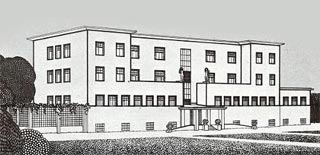The Nippon Music Foundation has put one of its most exclusive violins up for sale to raise money for earthquake and tsunami relief. The Lady Blunt Stradivarius was bought for around $10 million in 2008 and is expected to fetch at least as much at auction in June via online dealers, Tarisio. The Lady Blunt, once owned by a descendant of Lord Byron, dates from 1721, prime period for the Stradivarius workshop in Cremona.
It is one of 16 Stradivarius instruments owned by the Foundation. Most are loaned out for concert use to eminent soloists around the world. The rest are listed
here.
Which do you want first? The 44 musicians fired by the Brazil Symphony Orchestra (OSB) will give a free concert this Saturday with Cristina Ortiz as soloist at the Salao Leopoldo Miguez – a protest of the best kind against an authoritarian management and conductor. Put yours hands together, please, and let’s hear it for Cristina and the honest musicians of Rio.

Less happy news comes from Liverpool, where the orchestra intends to go ahead with its concert in May with OSB conductor Roberto Minczuk. The official line from the RLPO is: ‘We have no comment to make on what is an internal matter for another organisation in another country. Mr Minczuk’s engagement will go ahead as scheduled.’
Whether the
musicians of Liverpool agree with this policy will have to be tested as and when Mr Minczuk shows up. I will keep you posted. I may even go there to check him out.
According to Italian news agencies, Susanna Mälkki broke an age-old taboo when she led the world premiere of Luca Francesconi’s opera Quartet. The work, based on a Heiner Müller, derives from Les Liaisons Dangereuses and runs til May 7.
Could that really be true? Has Scala run 11 years into the 21st century before allowing a woman to do what they have been doing the world over for two generations? Apparently so.
Big hand for Susanna. No hand at all for La Scala
The Schwetzingen Festival is staging the world premiere tonight of a new opera by Georg Friedrich Haas, the contemporary Austrian composer. Titled Bluthaus (Blood House), it describes the sale of a house where two murders were committed. ‘We waded in blood,’ said librettist Klaus Händel. Others are drawing explicit comparisons with the Kampusch child rape and abduction scandal. It sounds like exploitation opera at its worst.
Sarah Wegener sings the heroine, Nadja.
The Klimt painting restored this week to its rightful owners after 70 years of Nazi dispossession has untold connections to the Gustav Mahler story.
Victor Zuckerkandl, the original owner, was a property developer in Vienna who built, among other amenities, the strikingly modernist sanatorium at Purkersdorf.
His brother, the anatomist Emil Zuckerkandl, was married to the media heiress and art critic Berta; both were close personal friends of Mahler’s. It may safely be assumed that Berta introduced Victor to Josef Hoffman, who designed the sanatorium as well as several gifts that Mahler commissioned for his wife, Alma. It would have been through Berta, too, that Viktor in 1914 purchased from Gustav Klimt his latest painting, Litzlberg am Attersee.
When Viktor died in 1927, the painting passed to his sister, Amalie, who lived nearby in Purkersdorf. Amalie had married into the Redlich family, who were lifelong friends of Mahler’s; he last stayed with them during the summer of Das Lied von der Erde. Amalie and her daughter Mathilde were deported and murdered by the Nazis in 1941 and their property sequestered. Amalie was listed in Nazi records as a sanatorium owner. The painting wound up in the hands of a private collector, who gave it to the Salzburg museum.
Corridor at Purkersdorf, designed by Hoffmann.
The Klimt scene would have been familiar to Mahler; it depicted the lake beside which he composed his third symphony. The Salzburg Museum has now agreed to restore the painting to Amalie’s grandson, in exchange for a $1 million gift for an Amalie Redlich annexe at the museum.
For more on the Klimts, the Zukerkandls and the Redlichs, see Why Mahler?





